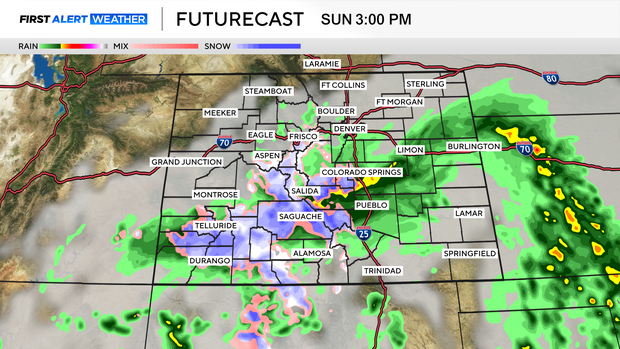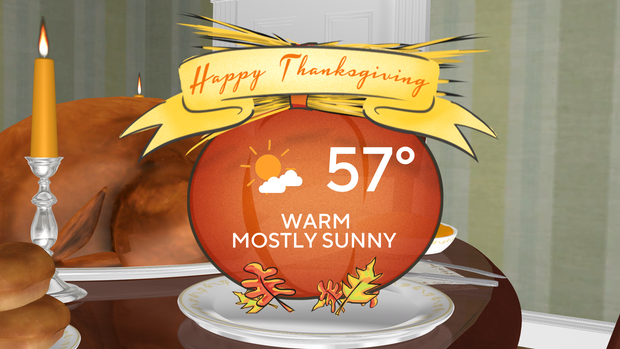On a sunny morning two years ago, a group of state officials stood in the mountains of northwestern Colorado in front of a handful of large metal crates. With a small crowd watching them, the officials began to unlatch the crate doors one by one. Out of each came a gray wolf — arguably the nation’s most controversial endangered species.
Colorado
Colorado’s top performing high school baseball hitters in 2025: Vote for the best

Colorado doesn’t get enough credit for producing high-level baseball talent. A number of big leaguers have come from the great state, like Chase Headley, John Stearns and James Mouton.
The following names have made quite the impression this season after leading in major statistical categories like homeruns, RBIs, batting average and hits. Players selected for this poll generally range within the Top 5 of a category.
These players might not be the most highly touted, recruited or covered, but their numbers indicate they are performing at their respective level — and likely impacting victory for their programs.
Take a look at the top hitters in 2025 and vote for who you think is the best at the bottom of the page. The voting poll will close on Wednesday, May 28 at 8 p.m. (PT).
(Stats are pulled from MaxPreps.com as of May 21, 2025)
Griffin leads the state in RBIs with 49 in 25 games off 42 hits. The standout senior also added 11 doubles, six triples and six homers while batting .512.
Hale also drove in 49 RBIs from 42 hits in 25 games while batting .627 and belting a state-leading 16 homers this spring. He only struck out four times in 94 plate appearances.
Simons is batting .620 with 47 RBIs off 44 hits and scored 48 runs in 24 games with 15 doubles and five triples. He also successfully stole 27 bases.
Gordon’s 11 homers are the second-best mark in the state while batting .447 with 44 RBIs off 38 hits with nine doubles an 27 runs scored in 25 games.
Larkin is batting .450 with 35 RBIs, 36 hits, 10 homers and nine doubles this season through 25 games.
Waltemath sits atop the homerun leaderboard with 10 in 24 games while batting .500 with 32 RBIs, 37 hits and 28 runs scored.
Ortiz is tied for the most hits this season with 46. The standout sophomore drove in 27 runs, hit 12 doubles and hit .648 through 23 games.
Kennell also has 46 hits this spring while batting .554 with 31 RBIs, 40 runs, 12 double, five triples and five dingers.
Eurich led the state in stolen bases with 41 while batting .417 with 12 RBIs of 25 hits and scoring 42 runs and drawing 20 walks.
Fritch is batting .583 with 42 hits, 29 RBIs, eight doubles, five triples and four homers while drawing 17 walks in 24 games for top team in Colorado.
The voting poll will close on Wednesday, May 28 at 8 p.m. (PT).
Bookmark High School on SI for all of the latest high school sports news.
To get live updates on your phone — as well as follow your favorite teams and top games — you can download the SBLive Sports app:
Download iPhone App | Download Android App

Colorado
Colorado has wolves again for the first time in 80 years. Why are they dying?

This was a massive moment for conservation.
While gray wolves once ranged throughout much of the Lower 48, a government-backed extermination campaign wiped most of them out in the 19th and 20th centuries. By the 1940s, Colorado had lost all of its resident wolves.
But, in the fall of 2020, Colorado voters did something unprecedented: They passed a ballot measure to reintroduce gray wolves to the state. This wasn’t just about having wolves on the landscape to admire, but about restoring the ecosystems that we’ve broken and the biodiversity we’ve lost. As apex predators, wolves help keep an entire ecosystem in balance, in part by limiting populations of deer and elk that can damage vegetation, spread disease, and cause car accidents.
In the winter of 2023, state officials released 10 gray wolves flown in from Oregon onto public land in northwestern Colorado. And in January of this year, they introduced another 15 that were brought in from Canada. Colorado Parks and Wildlife (CPW) — the state wildlife agency leading the reintroduction program — plans to release 30 to 50 wolves over three to five years to establish a permanent breeding population that can eventually survive without intervention.
“Today, history was made in Colorado,” Colorado Governor Jared Polis said following the release. “For the first time since the 1940s, the howl of wolves will officially return to western Colorado.”
Fast forward to today, and that program seems, at least on the surface, like a mess.
Ten of the transplanted wolves are already dead, as is one of their offspring. And now, the state is struggling to find new wolves to ship to Colorado for the next phase of reintroduction. Meanwhile, the program has cost millions of dollars more than expected.
The takeaway is not that releasing wolves in Colorado was, or is now, a bad idea. Rather, the challenges facing this first-of-its-kind reintroduction just reveal how extraordinarily difficult it is to restore top predators to a landscape dominated by humans. That’s true in the Western US and everywhere — especially when the animal in question has been vilified for generations.
Why 10 of the reintroduced wolves are already dead
One harsh reality is that a lot of wolves die naturally, such as from disease, killing each other over territory, and other predators, said Joanna Lambert, a wildlife ecologist at the University of Colorado Boulder. Of Colorado’s new population, one of the released wolves was killed by another wolf, whereas two were likely killed by mountain lions, according to Colorado Parks and Wildlife.
The changes that humans have made to the landscape only make it harder for these animals to survive. One of the animals, a male found dead in May, was likely killed by a car, state officials said. Another died after stepping into a coyote foothold trap. Two other wolves, meanwhile, were killed, ironically, by officials. Officials from CPW shot and killed one wolf — the offspring of a released individual — in Colorado, and the US Department of Agriculture killed another that traveled into Wyoming, after linking the wolves to livestock attacks. (An obscure USDA division called Wildlife Services kills hundreds of thousands, and sometimes millions, of wild animals a year that it deems dangerous to humans or industry, as my colleague Kenny Torella has reported.)
Yet, another wolf was killed after trekking into Wyoming, a state where it’s largely legal to kill them.
Colorado Parks and Wildlife has, to its credit, tried hard to stop wolves from harming farm animals. The agency has hired livestock patrols called “range riders,” for example, to protect herds. But these solutions are imperfect, especially when the landscape is blanketed in ranchland. Wolves still kill sheep and cattle.
This same conflict — or the perception of it — is what has complicated other attempts to bring back predators, such as jaguars in Arizona and grizzly bears in Washington. And wolves are arguably even more contentious. “This was not ever going to be easy,” Lambert said of the reintroduction program.
Colorado is struggling to find more wolves to ship in
There’s another problem: Colorado doesn’t have access to more wolves.
The state is planning to release another 10 to 15 animals early next year. And initially, those wolves were going to come from Canada. But in October, the Trump administration told CPW that it can only import wolves from certain regions of the US. Brian Nesvik, director of the US Fish and Wildlife Service, a federal agency that oversees endangered species, said that a federal regulation governing Colorado’s gray wolf population doesn’t explicitly allow CPW to source wolves from Canada. (Environmental legal groups disagree with his claim).
So Colorado turned to Washington state for wolves instead.
But that didn’t work either. Earlier this month, Washington state wildlife officials voted against exporting some of their wolves to Colorado. Washington has more than 200 gray wolves, but the most recent count showed a population decline. That’s one reason why officials were hesitant to support a plan that would further shrink the state’s wolf numbers, especially because there’s a chance they may die in Colorado.
Some other states home to gray wolves, such as Montana and Wyoming, have previously said they won’t give Colorado any of their animals for reasons that are not entirely clear. Nonetheless, Colorado is still preparing to release wolves this winter as it looks for alternative sources, according to CPW spokesperson Luke Perkins.
Ultimately, Lambert said, it’s going to take years to be able to say with any kind of certainty whether or not the reintroduction program was successful.
“This is a long game,” she said.
And despite the program’s challenges, there’s at least one reason to suspect it’s working: puppies.
Over the summer, CPW shared footage from a trail camera of three wolf puppies stumbling over their giant paws, itching, and play-biting each other. CPW says there are now four litters in Colorado, a sign that the predators are settling in and making a home for themselves.
“This reproduction is really key,” Eric Odell, wolf conservation program manager for Colorado Parks and Wildlife, said in a public meeting in July. “Despite some things that you may hear, not all aspects of wolf management have been a failure. We’re working towards success.”
Colorado
Rain and snow roll through Colorado on Sunday

A quick system is rolling through Colorado on Sunday. The mountains will see some snow; however, the northern mountains won’t see much at all. A winter weather advisory is in effect through midnight tonight for Southwestern Colorado, to include the San Juan Mountain Range and Pikes Peak. Four to eight inches is possible, with a foot for the higher mountain passes.
The Denver metro area and Eastern Plains could see some rain showers on Sunday afternoon.
This is a quick system that will clear out overnight, and the work week will start off mild and dry. If you are traveling for the Thanksgiving holiday in Colorado, the weather will be ideal. High temperatures in the Denver metro area will be in the mid- to upper-50s.
All of that changes as we look forward to next weekend. It’s still too far out to have high confidence, but there is a chance Denver could see its first snow next weekend. Even if Denver doesn’t get snow, the temperatures will plummet due to an arctic blast. High temperatures will only be in the 20s and 30s with lows in the teens and single digits.
Colorado
Colorado ski resort ranks among the best in country

-
Business1 week ago
Fire survivors can use this new portal to rebuild faster and save money
-

 World6 days ago
World6 days agoFrance and Germany support simplification push for digital rules
-

 News7 days ago
News7 days agoCourt documents shed light on Indiana shooting that sparked stand-your-ground debate
-

 World7 days ago
World7 days agoCalls for answers grow over Canada’s interrogation of Israel critic
-

 World6 days ago
World6 days agoSinclair Snaps Up 8% Stake in Scripps in Advance of Potential Merger
-

 World1 week ago
World1 week ago2% of Russian global oil supply affected following Ukrainian attack
-
Business6 days ago
Amazon’s Zoox offers free robotaxi rides in San Francisco
-

 Politics7 days ago
Politics7 days agoDuckworth fires staffer who claimed to be attorney for detained illegal immigrant with criminal history























